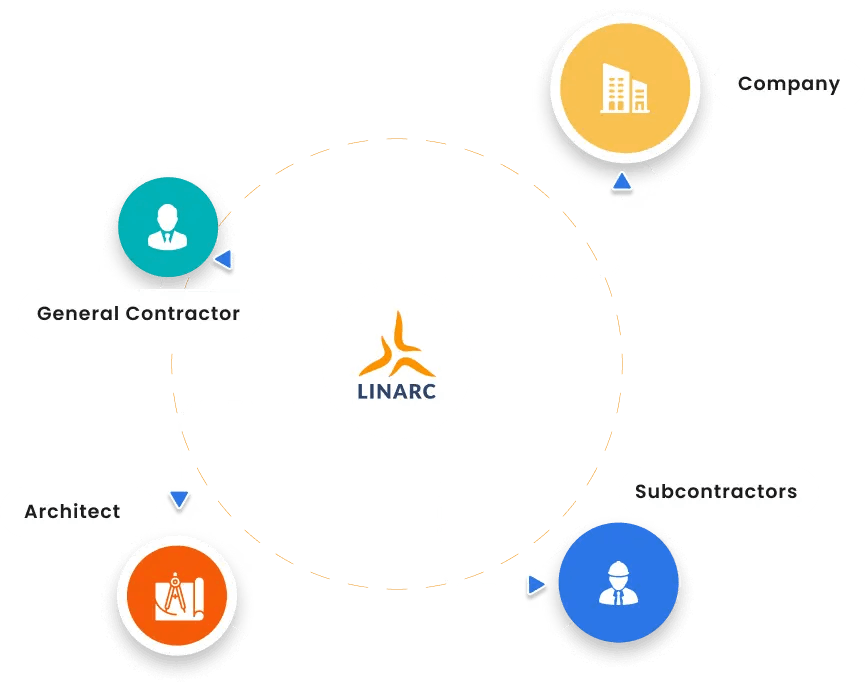What Are The Most Commonly Used Construction Project Management Tools?

These are the construction project management tools you need to know about if you intend to work as a project manager for a general contractor or construction management (CM) firm and deliver high-quality, high-value construction projects in a competitive market.
Here’s what we cover:
- How are construction project management tools used in project planning?
- Construction project estimating and bid management software
- How are construction project management tools used in the construction phase?
- How does collaborative construction project management software help?
- Construction project management tools provide the solution
- Construction project management tools that work
How are construction project management tools used in project planning?
Construction project managers are not deeply involved in the design process. However, the design team may ask you to collaborate on feasibility studies or provide input on the constructability of a design element early in the project planning phase.
So for that reason, you should be familiar with the most commonly used tools in the pre-construction process.
All great construction projects begin with great design.
AutoCAD from Autodesk is the original computer-aided design software and is still the most widely used. AutoCAD gives design professionals the power to create digital 2D and 3D designs more quickly and accurately than traditional, hand-drawn methods. In addition, the designs are easily edited and conveniently stored in the cloud, accessible from anywhere at any time.
Estimating and Job Costing
The design, estimating, and job costing workflow can follow two primary paths depending on the software and technology used.
Traditional hand-drawn blueprints or Computer Aided Design (CAD)
Both traditional hand-drawn blueprints and CAD drawings are two-dimensional (2D) representations of the completed built environment broken down into detailed sections.
But no matter if the design drawings were created digitally or by hand, the final blueprints will ultimately end up in digital PDF format for easy sharing and distribution.

Building Information Modeling (BIM)
Building Information Modeling, or BIM, is another software product built for the construction industry by Autodesk.
BIM is a relatively new technology with many advantages. As a virtual representation of the completed built environment, BIM allows design teams to identify space constraints and environmental impacts before construction. With Virtual Reality (VR) technology, owners, design teams, and general contractors can do virtual walk-throughs to consider construction sequences, floorplan layouts, and finish material choices too. BIM also allows asset owners to track the functionality of the facility’s operating systems throughout its life cycle.
Although BIM is not widely used, many construction professionals are considering it and exploring the most cost-effective path for BIM implementation.
Construction project estimating and bid management software
With the design finalized, it’s time for the estimating team to step in.
Project estimators use a variety of estimating and bid management platforms to share plans, perform project takes-offs, and invite subcontractors into the bidding process. The estimator’s job is to produce the best project proposal by leveling bids to access the total project costs based on the time, materials, and overhead expenses necessary to construct the project according to design.
Financial Management Solutions
As a construction project manager, you’re directly responsible for monitoring project performance against budget constraints. And we’re not talking excel spreadsheets and ledger books either.
SageIntact is another construction software solution that offers an estimating platform, an Resource Planning (ERP) system, accounting software, Human Resource (HR) platform, and more.
Your accounting team will integrate the schedule of values from the project contract into Quickbooks or accounting and ERP software to track project expenditures against the budget.
How are construction project management tools used in the construction phase?
Now it’s time to assemble the subcontractors, specialty contractors, and suppliers that will make up your project team, create a project management plan, establish the communication rules, and build the master project schedule.
Here again, there are two paths.
To stand alone or become united
Until this stage, the construction process has been very segmented, with multiple teams of specialists working with separate software platforms to produce a digital representation of the final built environment.
Now it’s up to you to organize this information, assemble a team, and build it.
Many construction companies push segmentation further by using a standalone construction scheduling platform. A standalone schedule could be as simple as an excel spreadsheet or one of the many project scheduling software platforms available.
This scheduling method requires a lot of back-and-forth with your subcontractors and suppliers making it a clunky, slow, and segmented way forward.
Better together
The better option is an integrated, all-in-one, collaborative scheduling and project management software solution.
The benefit of an integrated, collaborative, all-in-one project management solution lies in the simplicity of unity.

How does collaborative construction project management software help?
With all the project stakeholders on a single collaborative platform, the owner, the design team, project engineers, project managers, subcontractors, and suppliers have the single source of truth and guidance they need to move the project forward.
Collaborative scheduling
Construction project management tools allow you to tap into that wealth of experience and knowledge by collaborating with those construction professionals early in the process and creating the master schedule collaboratively.
Work Breakdown Structures (WBS)
Templated work breakdown structures within the platform are linked to the schedule of values and the ERP or accounting system to track project expenditures against the budget.
Collaborative construction platforms, like Linarc, go one step further.
Linarc allows subcontractors to further decompose those templated work breakdown structures by adding descending levels of detail. Detailed work packages help subcontractors be more productive by giving work crews specific direction in the field.
And detailed work breakdown structures also help you build float and slack into your master schedule for the most accurate critical path forward.
Workflow automation
Linarc also has prebuilt templates for common construction workflows, such as Request for Information (RFI), change orders, submittals, and punch lists.
That means fewer manual tasks, faster response times, fewer delays, and a seamless construction operation.
Document management
The cloud-based platform stores the architectural drawings, specifications, and critical project documents like change orders and the latest revisions, so they’re always at your fingertips. That means everyone has quick and easy access to what they need to stay productive.
Project huddles and safety meetings
With so many stakeholders competing for time, space, and attention, the project team needs to connect and communicate to avoid the conflicts and confusion that cause accidents and costly delays.
Construction project management tools provide the solution
Schedule and conduct virtual, face-to-face, and hybrid meetings anywhere on the job site. Team members can easily connect by laptop, desktop, and mobile device.
Project financials and budget monitoring
The Linarc project management software connects the work performed in the field through the WBS. Labor and material expenditures are automatically tracked against the budget in real-time for accurate cost accounting.
The owner and project management teams have quick and easy access to detailed reporting and reference dashboards, so everyone is informed and on target.
Punchlist and Closeout
Contextual punch lists with photos and document attachments lead project teams to punch list items for fast resolution. In addition, the digital daily work reports confirm completion for accurate documentation.
Specifications, documents, and operating manuals are stored in the cloud for a seamless transition into commissioning and closeout.
Construction project management tools that work
Lead your construction team with a construction project management tool that keeps the schedule the center of attention.
Keep project documents organized and readily available in an intuitive, easy-to-use platform.
Collaboration and seamless data flow is the lynchpin.
Linarc is an all-in-one, multi-phase supporting, collaborative construction project management tool that connects the entire project team in a simple, easy-to-use, collaborative software solution.
Supercharge your productivity and operational efficiency with Linarc’s integrated, all-in-one, multi-phase supporting construction project management software.




